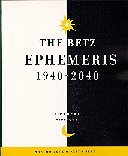
|
The Astrology Center of America, 207 Victory Lane, Bel Air, MD 21014 Tel: 410-638-7761; Toll-free (orders only): 800-475-2272 |
||||||
|---|---|---|---|---|---|---|
| Vedic TITLE Index | Vedic AUTHOR Index | Vedic PAGES Index | Vedic SEARCH Engine | Astrology Home | E-Mail: | |
 |
Vedic Astrology:Vedic Ephemerides |
Here are three strikingly different Vedic ephemerides. Please note the differences carefully:
|
On January 1, 2000, its value was |
On January 1, 2000, its value was |
From these positions you must SUBTRACT your favorite ayanamsa. |
See the descriptions (below) for other details. Note carefully the pdf illustrations.
 |
||

|
||

|
||

The Astrology Center of America
207 Victory Lane, Bel Air, MD 21014
Tel: 410-638-7761; Toll-free (orders only): 800-475-2272
| Vedic TITLE Index | Vedic AUTHOR Index | Vedic PAGES Index | Vedic SEARCH Engine | Astrology Home | E-Mail: |
|---|